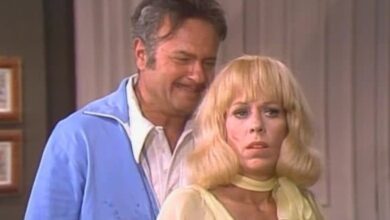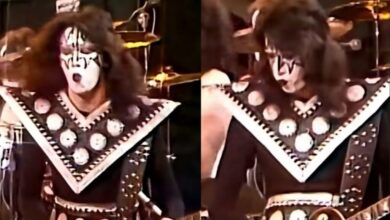Bobby Bare’s “Detroit City” Gave a Voice to the Lonely Working Man and Redefined Country-Pop Crossover in 1963
Released in 1963, Bobby Bare’s rendition of “Detroit City” became one of the most defining and emotionally charged country recordings of its time. Also known by its refrain “I Wanna Go Home,” the song gave voice to a generation of displaced rural Southerners who had moved to northern industrial cities in search of a better life—only to find themselves overwhelmed with loneliness and homesickness. It struck a powerful chord with listeners across America, peaking at No. 6 on the Billboard Country chart and crossing over to reach No. 16 on the Billboard Hot 100. Its poignant narrative and blend of country and pop elements helped pave the way for a new kind of country storytelling that resonated with urban and rural audiences alike.
Bobby Bare was not an overnight success. Born in 1935 in Ironton, Ohio, he started out scraping together work in the rock and pop fields before gradually finding his voice in country music. Early in his career, he wrote songs for others and even had a minor rockabilly hit under the name Bill Parsons. But Bare’s breakthrough came when he embraced the country genre in earnest. He wasn’t known for a booming vocal range, but his ability to deliver a song with quiet intensity and natural sincerity made him stand out in an era dominated by twang-heavy baritones and overproduced studio fare.
The story of “Detroit City” began with songwriters Danny Dill and Mel Tillis, who drew from the lived experiences of many Southern migrants working in Detroit’s auto industry during the post-war boom. Inspired by the loneliness that accompanied these economic migrations, they penned a song that captured the inner conflict between pride in one’s sacrifices and a yearning for the simplicity and emotional security of home. When Bobby Bare came across the song, he immediately connected with its emotional core. He knew the feeling—not just from observation, but from personal experience as a working-class man who had traveled far from home to make it in the music business.
The recording of “Detroit City” was handled by legendary producer Chet Atkins at RCA Victor Studios in Nashville. Atkins was instrumental in crafting the “Nashville Sound,” a smoother, more pop-oriented style of country music designed to appeal to wider audiences. With Atkins at the helm, Bare’s recording featured subtle string arrangements and background vocals from the Anita Kerr Singers, offering a polished but emotionally grounded atmosphere. The famous spoken-word segment in the song’s second half—where Bare’s voice takes on a weary, reflective tone—was a production choice that added narrative depth and became one of the track’s most memorable moments.
Upon its release, “Detroit City” quickly gained traction on both country and pop radio. The song’s ability to bridge these formats was no small feat in an era when genre boundaries were tightly policed by both fans and the industry. Bobby Bare’s understated delivery lent the song authenticity, while its polished production allowed it to sit comfortably on pop playlists. Bare received the 1964 Grammy Award for Best Country & Western Recording for the track, an accolade that cemented his place among the genre’s most promising voices.
Culturally, “Detroit City” arrived at a time when the American landscape was shifting. Rural Americans were moving to urban centers in unprecedented numbers, and the emotional costs of that migration hadn’t yet been fully explored in popular music. Bare’s song gave language to a quiet sorrow shared by many—homesick workers, displaced dreamers, and those caught between two lives. Its success helped broaden the thematic scope of country music, proving that it could serve not only as a vehicle for love and heartbreak but for social observation and existential reflection.
The impact of “Detroit City” on Bobby Bare’s career was immediate and profound. The song elevated him from a struggling songwriter to a nationally recognized recording artist. He was soon touring widely, appearing on national television, and recording a string of successful albums. Unlike many of his contemporaries, Bare became known for choosing songs with strong narratives and a deep emotional undercurrent, a pattern that began with and was shaped by the success of “Detroit City.”
Beyond Bare’s career, the song influenced a wave of similar recordings in the 1960s that explored themes of longing, labor, and migration. Artists like Merle Haggard, Glen Campbell, and Tom T. Hall would go on to build their legacies on similarly introspective material. “Detroit City” proved that commercial success didn’t have to come at the expense of lyrical depth. It became a model for songwriters who sought to blend popular appeal with genuine emotional resonance.
Over the years, “Detroit City” has been covered by several notable artists, including Tom Jones, Charley Pride, Jerry Lee Lewis, and Dean Martin. Each brought a unique interpretation—Jones leaned into its dramatic elements, while Martin softened it with crooner charm—but none eclipsed the earthy gravitas of Bare’s original recording. It remains the definitive version, anchored by that unmistakable voice that sounds both world-weary and hopeful at once.
At the time of the song’s release, Bobby Bare was also navigating personal transitions. He had recently signed with RCA, was becoming a family man, and found himself straddling the uncertain space between ambition and domestic responsibility. These elements added weight to his performance of the song—it wasn’t just a story he was telling, it was a feeling he was living.
In the decades that followed, “Detroit City” never faded from the country canon. It continued to receive radio play, featured on greatest hits compilations, and appeared on various lists of essential country songs. More than just a hit, it became an emblem of a particular American experience and a time capsule of mid-century dislocation and yearning.
Musically, the song’s success helped solidify the Nashville Sound as a viable vehicle for conveying heartfelt, working-class stories. It influenced production choices for years to come and showed that lush arrangements could still carry blue-collar messages. The track’s fusion of polish and grit became a blueprint for countless records that followed.
Bobby Bare would go on to have a long and respected career, earning induction into the Country Music Hall of Fame in 2013. While he released dozens of successful tracks, “Detroit City” remains his signature song—the one that introduced his voice to the world and proved that honesty, simplicity, and great storytelling could travel far.
In the end, “Detroit City” endures not just as a beautifully crafted ballad, but as a cultural document. It captured a national mood with stunning clarity, wrapped in a melody that refused to be forgotten. Through it, Bobby Bare reminded us that even in the midst of steel and smoke, the human heart longs for something quieter—and that longing, in all its sorrow and beauty, deserves to be sung.





